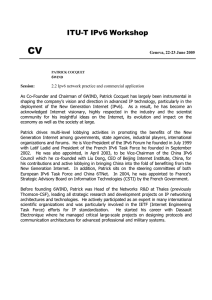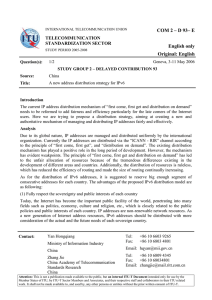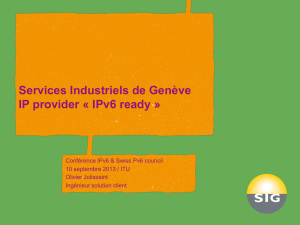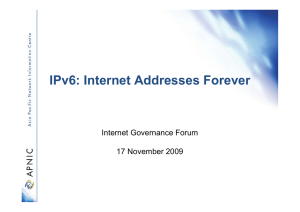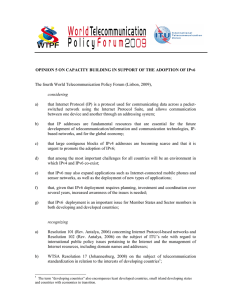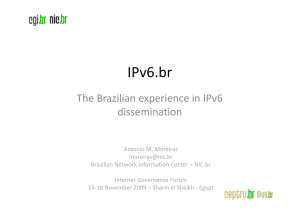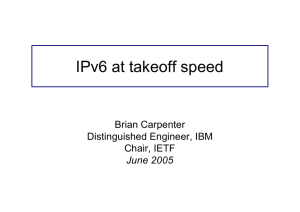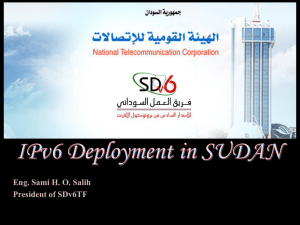Deputy Chair Bulgarian State Agency for ITC Dr. Krassimir Simonski 1
advertisement
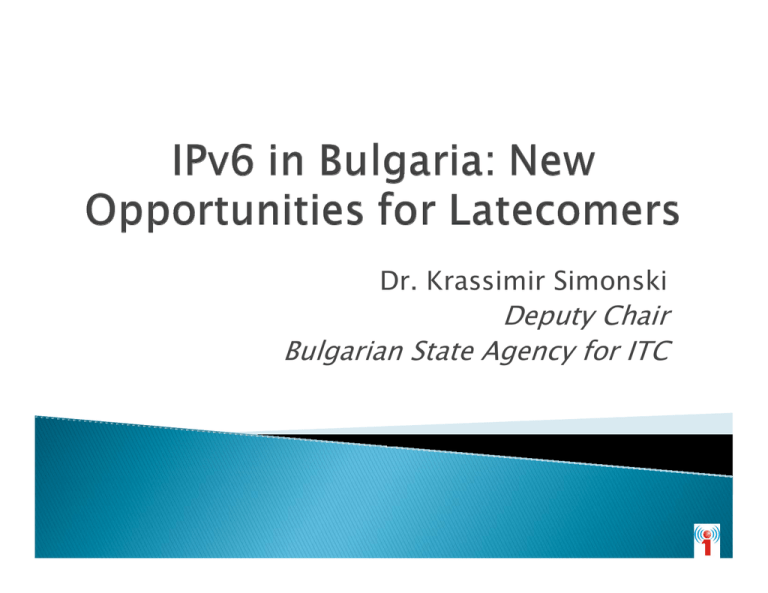
Dr. Krassimir Simonski Deputy Chair Bulgarian State Agency for ITC 1 ` 1970 to 1995: Academic Period ◦ Role of Universities and Research Institutions ◦ TCP/IP vs. others ◦ Introducton of Internet ` 1995 to 2005: Business Period ◦ WWW ◦ Servers ◦ IP addresses still enough ` 2005 + : Social Phenomena ◦ Web 2.0 ◦ Social networks ◦ Internet of things ` Bulgaria ◦ ◦ ◦ ◦ ` ` 1998 to 2005 – mass penetration of Internet IP addresses already a limited resource 1993 – 2 Class B addresses, 1998 – <6 Class B Number of PC - > 1 mln. (150,000 every year) Number of computers > IP addresses Mobiles – over 100% (potential IP users) 3 ` Solution: ◦ Almost unlimited number of computers behind the firewall ` Problem: ◦ Anonymity ◦ Tracking users by IP address (EC Directive #24 on data retention) ◦ Additional hardware and software ◦ No sharing of resources and information ` ` ` ` ` Unleash the information behind NAT Internet of Things Digital divide – Internet as “equalizer”, not “divider” Improved security + user identification Traffic optimization – multimedia applications over limited capacity lines ` ` ` ` Champions? Core Players to assume leadership Role of Academic and school network Role of the Government ◦ Address distribution ◦ Arbitration ` Training in IPv6 ` ` ` ` ` Donation from Cisco Equipment at the cost of $1,300,000 Second lab in Europe Located in the premises of SAITC but access remotely Access to IPv6 curriculum developed by 6DISS 7 ` ` Follows 6DISS (Dissemination of IPv6 in Europe): Training Objectives: ◦ IPv6 Training ◦ Supporting IPv6 Deployment ` ` ` Partners: Martel CH, Cisco NL, Renater FR, GRNET GR, FCCN P, NIIF HU, Consulintel ES, UCL UK, Soton-ECS UK, UNINETT N, AfriNIC MU, LACNIC UY, BREN BG Budget: €1,284,776 Kick-off meeting: April 2-3, 2008 (30 months) 8 9 ` Bulgarian Research and Education network ◦ ◦ ◦ ◦ ◦ ◦ ` Government and Academic Network in one School network GEANT Project, SEEREN, SEELight 6DEPLOY IPv6 Lab Public Internet Register Big Internet providers ◦ LAN ◦ xDSL ◦ mobile 10 ` Government role will increase ◦ Security and stability ◦ Arbitration for resources – names, addresses, backbone networking ◦ Introduction of new global technologies – IPv6, satellite, wireless ◦ Competition regulations ` ` IPv6 as “equalizer” but be aware of new “divide” – “exclusive” IPv6 technologies Cost of deployment – the upgrade challenge to vendors 12
